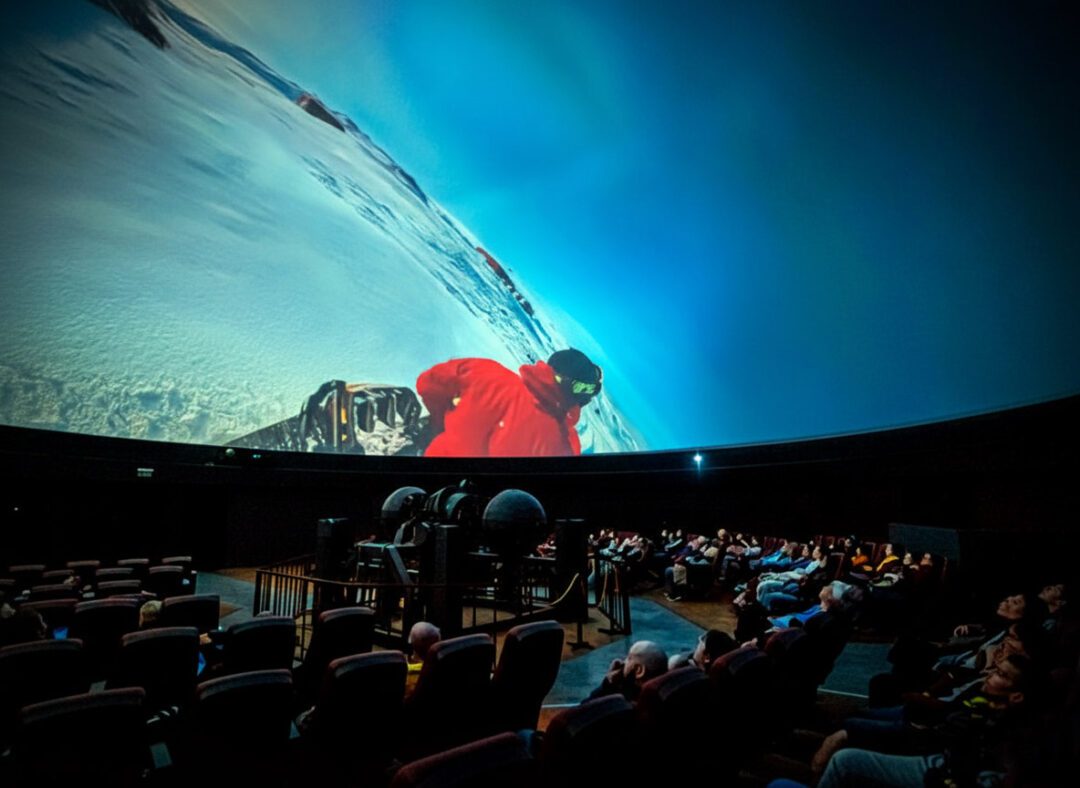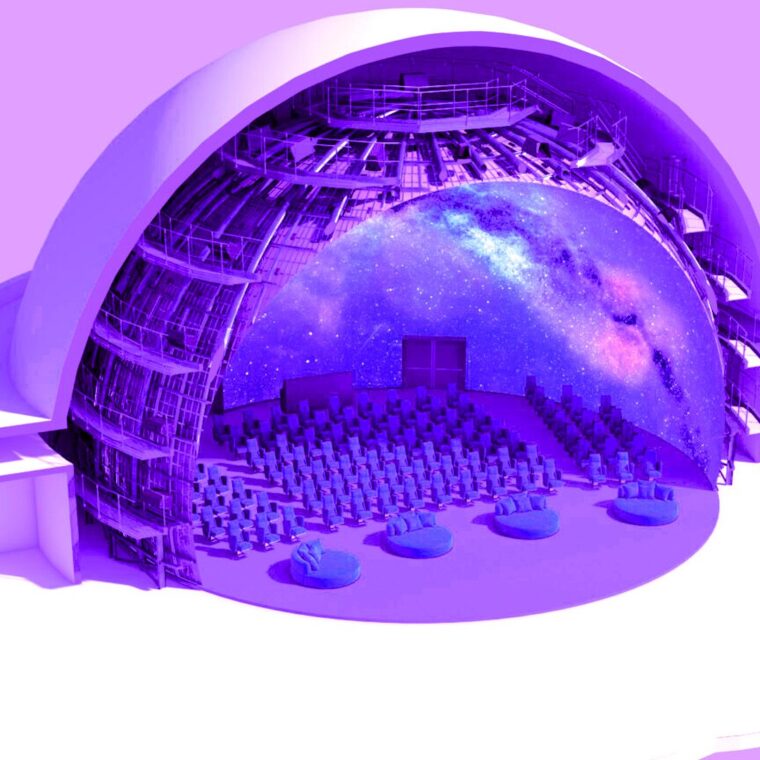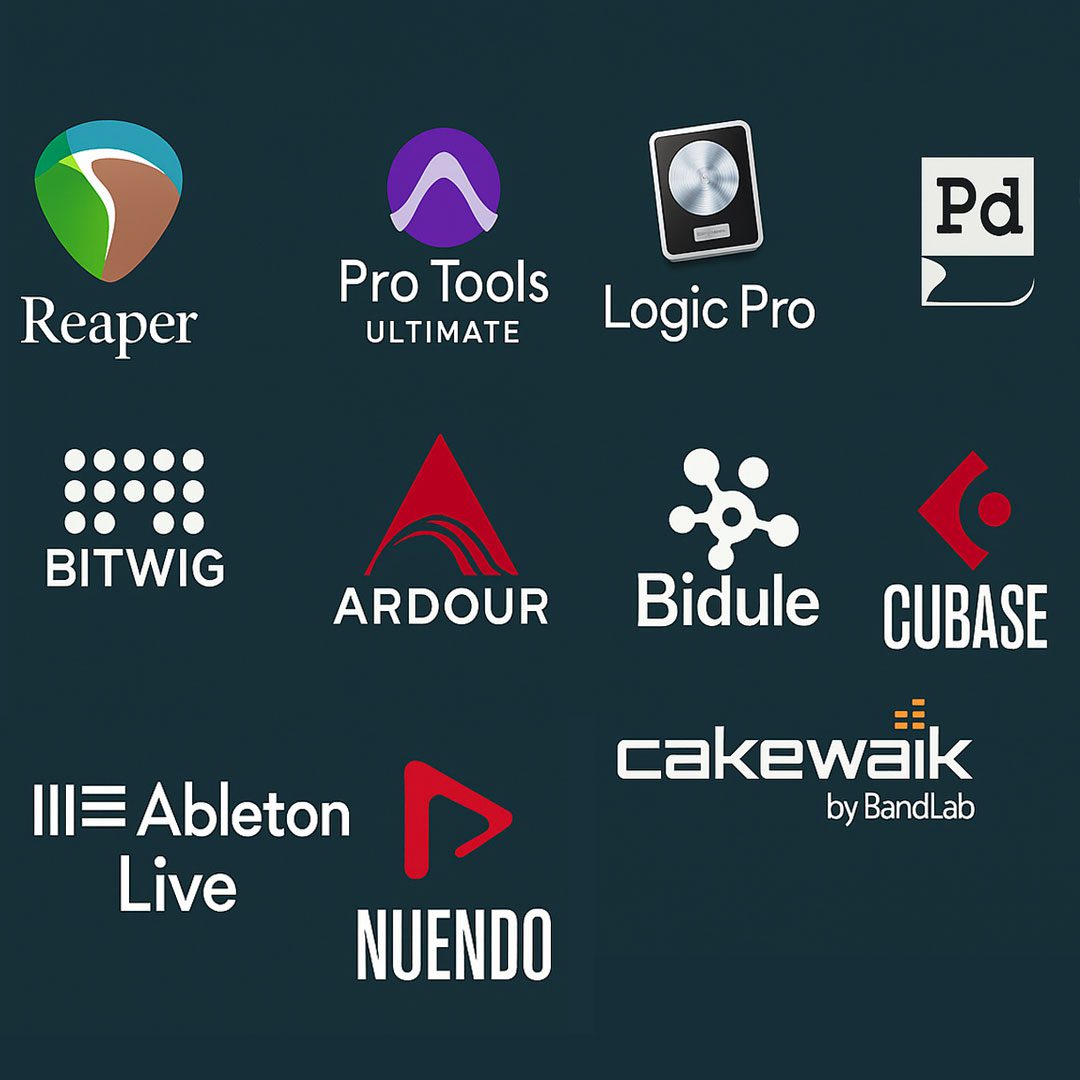During a meeting with part of the team from the Fulldome Festival Montevideo 2026, which will take place from April 10 to 12, 2026 at the Agrimensor Germán Barbato Planetarium, the need arose to create a guide that clearly explains how to export multichannel mixes intended for their dome. The planetarium was recently restored and operates with an 8K digital system and a 5.1 sound setup provided by RSA-Cosmos. The venue combines six laser projectors in an 18-meter Astro-Tec dome.
This document is intended to help participants in the international open call prepare their material in a straightforward way, free of technical ambiguities.

Montevideo Planetarium – Agrimensor Germán Barbato
Below are the technical parameters typically requested by festivals that work with 5.1 mixes.
Technical Summary:
- Resolution and Sample Rate
24-bit and 48 kHz. Commonly used across video post-production. - Integrated Loudness
–24 LKFS ±2 LU. Measurement compatible with ITU-R BS.1770. - Maximum True Peak
–3 dBTP. This headroom is important to prevent issues during conversion to other codecs. - 5.1 Channel Order
L R C LFE Ls Rs. This follows the SMPTE order used in most productions. - Delivery
Separate mono files or a single interleaved file. Both formats are accepted.
Session Preparation in the DAW
A precise setup before bouncing prevents errors in the final delivery. It’s advisable to double-check each setting before proceeding to ensure consistency between the mix and the delivery format.
Project Setup
Set the sample rate to 48 kHz and the bit depth to 24-bit in your DAW’s project settings. Make sure these parameters match the specifications required by the festival.
Master Bus
Configure the main output bus in a 5.1 format with its six channels. Confirm that the DAW is assigning the channel order correctly according to the required standard.
Track Routing
Check that each mono or stereo track is routed to the 5.1 bus and panned to its proper position: L, R, C, Ls, and Rs. Review any redundant routings or sends that could alter the final spatial distribution
Channel Verification
Ensure that the LFE and C channels receive the intended content. The C channel is key for dialogue clarity and for anchoring elements that structure the scene inside the dome. Also make sure the LFE is not receiving duplicated material from the main channels.
Levels
Proper level management prevents distortion and ensures compatibility with the dome’s playback systems.
True Peak
The maximum level must not exceed –3 dBTP. To ensure this, place a true-peak-enabled limiter on the master bus and set its ceiling to –3 dBTP. If your DAW includes a limiter with true-peak measurement, use it.
Free Options:
- Limiter №6 (VladG), which includes true-peak metering.
- LoudMax, useful for quick adjustments.
Integrated Loudness
The target is –24 LKFS ±2 LU, following the ITU-R BS.1770 standard. Insert a loudness meter on the master bus and measure the integrated loudness over the entire piece. If the value exceeds the target range, reduce the overall gain or adjust the master fader.
Free Meters:
- Youlean Loudness Meter, offering integrated LUFS and True Peak readings.
- MLoudnessAnalyzer, compatible with ITU and EBU standards.
Final Check
Measure the entire piece with the loudness meter and verify peak levels with the true-peak meter before starting the export. This ensures that the mix meets the required specifications.
LFE Channel Handling
The LFE channel is used for low-frequency information intended for specific effects. It’s advisable to restrict its content to signals below 120 Hz.
Content
Avoid sending all low-frequency material to the LFE. Bass, percussion, or drones should remain in the main channels to preserve the overall balance. The LFE acts as reinforcement, not as the primary low-frequency channel.
Export Level
Export the LFE track at unity gain in the final file. This preserves the intended relationship between channels and prevents unnecessary compensation during playback.
Use in Sound Design
Reserve the LFE for specific events that require controlled emphasis.
Export
The final file must be generated as an uncompressed WAV at 24-bit resolution and a 48 kHz sample rate.
Delivery Options
You can export six separate mono files, one per channel, or a single interleaved file containing all six channels in one container. Both options are valid, depending on the project’s preference or the festival’s instructions.
Channel Order
The SMPTE order is L, R, C, LFE, Ls, and Rs. It is essential that the file, whether mono or interleaved, follows this sequence. Pro Tools and most professional systems use this order, but if you are working with a different DAW, check its documentation to confirm channel assignments.
Example of Mono File Naming
TitleOfWork_Artist_51_V01_L.wav
TitleOfWork_Artist_51_V01_R.wav
TitleOfWork_Artist_51_V01_C.wav
TitleOfWork_Artist_51_V01_LFE.wav
TitleOfWork_Artist_51_V01_Ls.wav
TitleOfWork_Artist_51_V01_Rs.wav
Example of Interleaved File Naming
TitleOfWork_Artist_51_V01.wav
Interleaved File Verification
Reimport the file into a new session and check that each channel contains the intended material. If the DAW does not clearly display the channel order, split the file into six mono tracks to identify the content and rename them if necessary. This verification ensures that the export respects the SMPTE sequence and matches the mix structure.
Synchronization and Reference Files
Synchronization and Reference
The audio must start exactly at 00:00:00:00 according to the timecode. Its duration should match the video frame by frame to ensure precise synchronization.
Stereo Reference
It is recommended to create a stereo downmix reference without including the LFE channel and deliver it separately. This file allows for quick verification and alignment of the mix on stereo systems.



